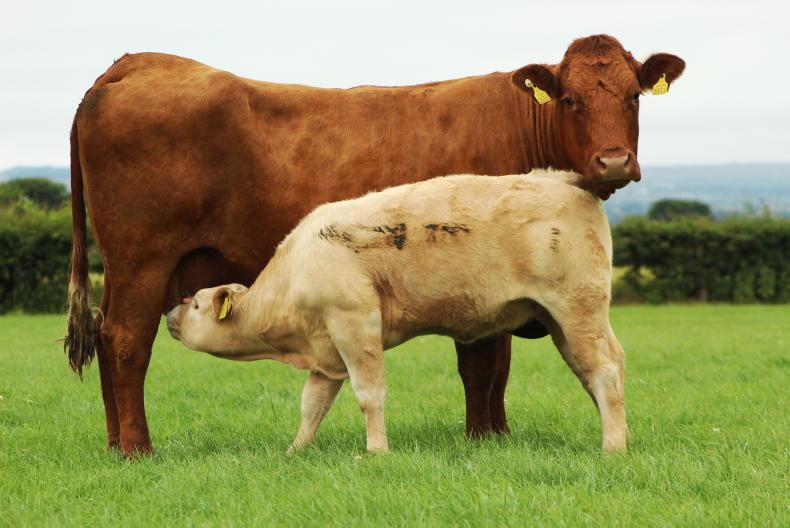The current best estimate from DAERA is that it will take around £18m to fund payments relating to the first year of a new suckler cow scheme in NI.
Due to open from 1 April 2025, farmers will be paid £100 per eligible calving event, where heifers have their first calf by a maximum of 34 months and mature suckler cows have a calving interval (CI) at, or below, a maximum of 415 days. These targets drop to 32 months and 405 days respectively in year 2 of the scheme.
Addressing the Stormont Agriculture Committee last Thursday, Dr Rosemary Agnew from DAERA said an allocated budget of £18m created “sufficient headroom” given that recent data suggests only 73% of suckler cows will meet the 415 day CI target. In addition, only 62% of beef heifers currently have their first calf below a maximum age of 34 months.
“We’ve taken that into account in trying to set the budget for the scheme. So we’re confident that our budget projections are correct,” said Agnew.
Funding
The £18m package is not new money, but will be taken from all area based payments.
In 2024, a total of 9% was removed from the Basic Payment Scheme (BPS) to fund the first year of the Beef Carbon Reduction (BCR) scheme.
That created a fund of around £26m, although the BCR pay-out (due this month) is likely to total just under £20m. DAERA is yet to confirm what it will do with the unspent funds.
This year, with a new Farm Sustainability Transition Payment replacing the BPS, a further deduction is due to be made to fund both beef schemes. If a pot of around £38m is required, it would necessitate a deduction of around 13% in 2025 area payments compared to the BPS in 2023.
Aside from funding, DAERA is yet to confirm when it will make payments relating to the first year of a new suckler scheme, although it is likely to be the summer of 2026.
Emissions
The key reason that these beef schemes have been introduced is to reduce the incentive for farmers to keep unproductive animals, ultimately driving down greenhouse gas emissions from the NI beef sector.
At last Thursday’s meeting, Dr Rosemary Agnew confirmed that the two schemes are expected to deliver 25% of the emissions reduction targets set out in 2023 to 2027 climate action plans for agriculture.
Most of that is coming from the BCR scheme, with the suckler cow scheme contributing around 4 to 5% of the 25% total, confirmed Agnew.
On practical issues around the new suckler scheme, she emphasised the payment will go to the person who owned the animal at calving. It doesn’t matter if the cow was an import and payment will be made even if the calf is dead, although it still needs to be tagged, BVD-tested and registered on NIFAIS.
Farmers will have to “opt-in” to the suckler cow scheme and it is still subject to MLAs passing relevant legislation – that legislation is due to be considered by the Stormont Agriculture committee today (Thursday).









SHARING OPTIONS